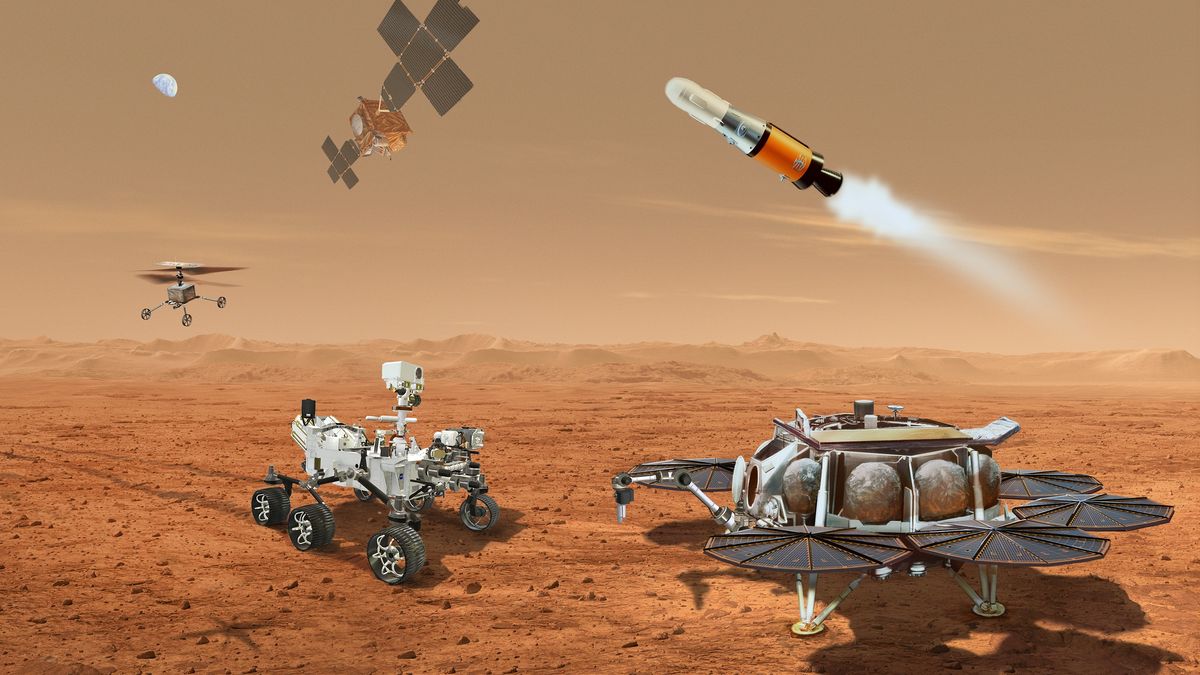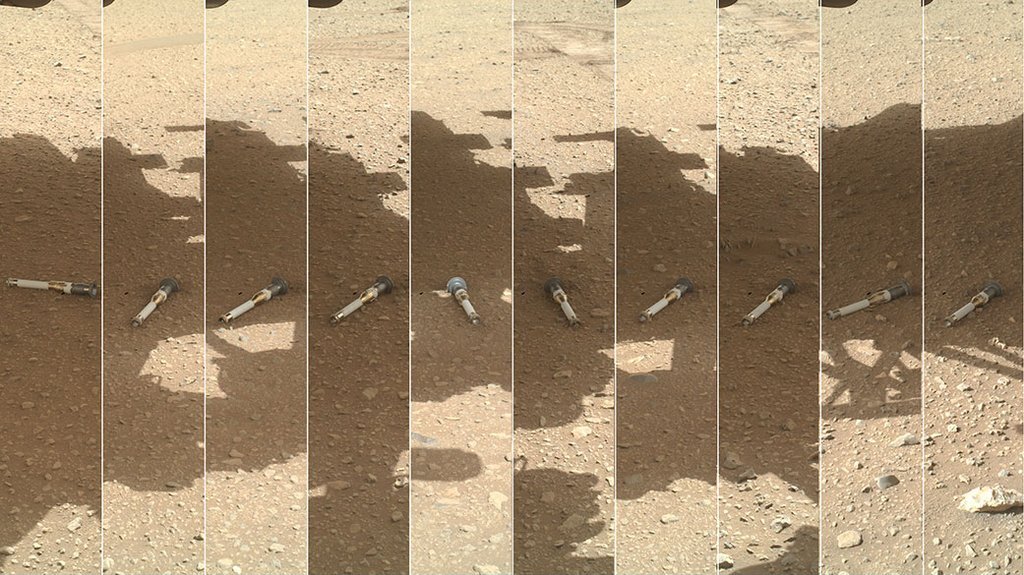
NASA’s Mars sample return mission is facing some tough scrutiny.
The Senate Appropriations Committee has made its recommendations for the spending bill for fiscal year 2024, and it doesn’t deliver everything NASA had hoped. The Commerce, Justice, and Science Spending Act (CJS), which allocates money to NASA and a few other government agencies, was revised by the committee in a 28-to-1 vote on July 13. The bill secures funding for NASA’s ongoing Artemis program to the moon and other exploration initiatives, but cuts the space agency’s planetary science budget by more than half a billion dollars.
in the opening commentsSenator Patty Murray stated that the bill was “written under some very difficult limitations,” adding her position that “these caps limit our ability to invest in the future of our country.”
First on the commission’s chopping block appears to be NASA’s ambitious Mars Sample Return (MSR) mission, a plan to retrieve Martian geological samples collected by the Perseverance rover. The report raises concerns about the mission’s ever-delayed schedule and increasing costs. The latest Ars technology a report Details inflated internal cost projections for MSR at NASA, nearly doubling the overall mission estimate to between $8 and $9 billion.
Related: What awaits us in returning samples from Mars?
The Senate committee’s report notes their concern that MSR is taking priority over other critical-path NASA missions, stating, “The committee has significant concerns about technical challenges facing MSR and potential additional impacts to confirmed missions, even before MSR has completed its initial design review.” ”
The report gives NASA 180 days after the law is passed to provide details of the annual budget for MSR that fits within the $5.3 billion life cycle cost blueprint included in the bill. Planetary Science Decadal Survey 2022. If the space agency misses the deadline, or fails to cut costs to fit the proposed budget, the mission could face cancellation. It also allowed the committee to suggest programs to which these funds could be reallocated, should that repeal occur. They include the Artemis campaign, the Dragonfly mission, and the Principal Orbiter and Probe mission to Uranus.
The Decadal Survey, which guides NASA’s exploration priorities for the next 10 years, puts the MSR at the top of its list, but according to the Senate report, “the committee is concerned that despite Congress submitting the full request for this mission in previous years […] The projected launch schedule continues to slip and the increased financial and human resources allocated to the MSR are causing NASA to delay other high-priority missions across the Science Mission Directorate.”

The MSR mission’s goal is built into its name – to collect samples from the surface of Mars and return them for study back on Earth. Throughout the history of spaceflight, only a handful of robotic sample-return missions to the Moon have been successful. Trying to collect material from Mars and return it is an ambitious undertaking that has never been attempted.
The mission is a collaboration between NASA and the European Space Agency (ESA), which will require an automated lander, and a pair of helicopter-like drones like the Ingenuity Helicopter hovering around the surface of Mars alongside the lander. Perseverance also contributes to the MSR task. The rover is equipped with 38 sample containers that are filled and deposited as it travels on the surface of Mars, which will eventually be collected by the MSR rover.
Once collected, the ascent vehicle will launch the samples into orbit of the Red Planet, and rendezvous with the Earth Return Orbiter, which will launch itself from Mars orbit on a trajectory for Earth, where the return capsule will bring the samples long flight. Finish with a soft parachute landing in the Utah desert.
If successful, the recovered Martian material could provide invaluable data to researchers. Theories about Mars’ geological evolution, the planet’s history, and even signs of ancient biological life can be derived from the distance. However, to the Senate committee, it would seem, a successful MSR is not worth sacrificing other critical NASA missions.
Nodal survey agrees, to an extent. It recommends completing the MSR “as quickly as possible,” but stresses that the cost of the mission “should not be allowed to undermine the long-term programmatic balance of the planetary portfolio.” Rather than suggesting that the mission be delayed if the MSR goes over budget, the survey recommends that NASA work with lawmakers to “secure budget increases” to help ensure its success.
Apart from MSR, CJS Spending Bill NASA’s portfolio for its exploration programs increases from this year onward by about $270 million, but that’s still $230 million short of the space agency’s 2024 budget request.
In all, the bill already reduces NASA’s money by $384 million compared to fiscal year 2023. This is in part because Financial Responsibility Actpassed by the Senate last month, caps non-defense spending for the coming year and allows only a 1% increase through 2025.

“Web maven. Infuriatingly humble beer geek. Bacon fanatic. Typical creator. Music expert.”





More Stories
Scientists confirm that monkeys do not have time to write Shakespeare: ScienceAlert
SpaceX launches 23 Starlink satellites from Florida (video and photos)
A new 3D map reveals strange, glowing filaments surrounding the supernova